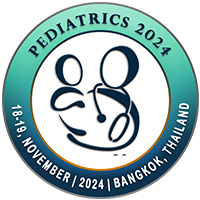
Aida Gadzhigoroeva
Moscow, Russian FederationTitle: Alopecia Areata vs Trichotillomania. Differential Diagnosis According to Trichoscopy
Abstract
Alopecia areata (AA) is one of the most common forms of children's hair loss. Meantime, its clinical picture appears similar to trichotillomania (TTM), thus, it leads to incorrect diagnosis and management. Unlike the total and universal forms of AA, which are not included in the differential diagnosis of TTM, local and subtotal forms of AA display similar patterns to TTM: localization (scalp, eyebrows, eyelashes), clinic (complete or partial absence of hair growth in the foci), trichoscopic signs in the alopecia area (black spots, pinnate hair, tulip-shaped hair). During the process of careful examination it's available to suspect some evident features of TTM, when the foci on the head looks irregular in contour, they are located in scalp areas that are easy for hand access, and also we can observe short pigmented hair in the foci. The clinical symptoms and trichoscopic signs of AA: yellow and black dots at the mouth of the follicles, dystrophic hair in the foci of baldness - are due to inflammation around the hair follicle as a result of loss of immune privilege. Within TTM, applying force along the length of this hair results in pulling hair out, the stems are torn, forming broken hair of varying lengths. The characteristic changes of broken hair ends are most commonly split and twisted hair, V-shaped hair tips and "flame tongue" shaped ends. However, despite the undoubted usefulness of detecting these trichoscopic signs, it should be considered that they are not pathognomonic for TTM and are rarely, but still occur in AA and other hair diseases. The report provides major differential diagnosis signs for clinical similar forms of alopecia, describes in details trichoscopic features of AA and TTM so far.
Biography
TBA

